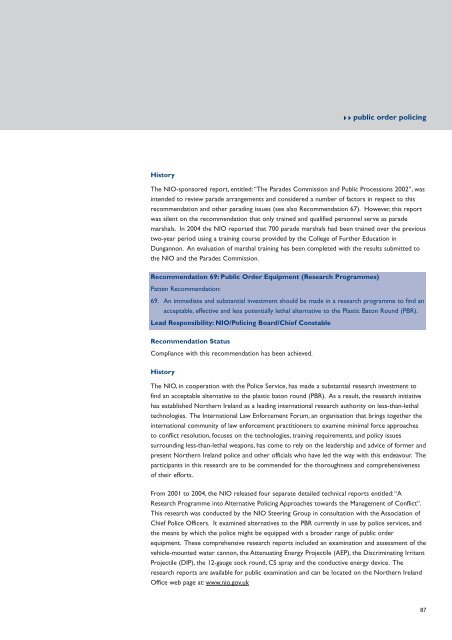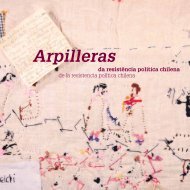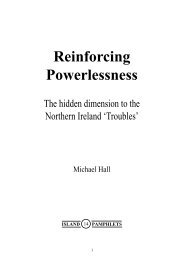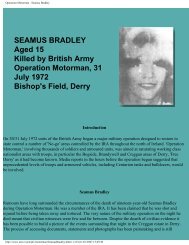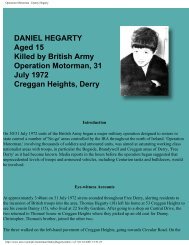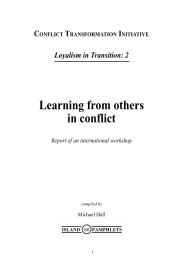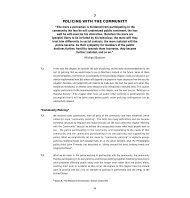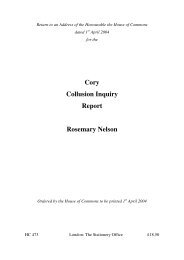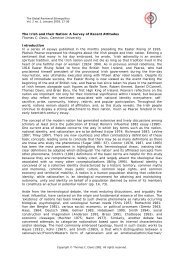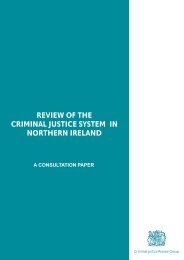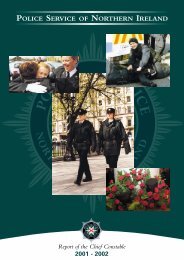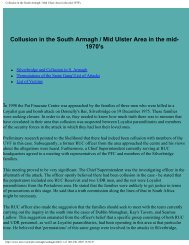11293 report 19 - CAIN - University of Ulster
11293 report 19 - CAIN - University of Ulster
11293 report 19 - CAIN - University of Ulster
Create successful ePaper yourself
Turn your PDF publications into a flip-book with our unique Google optimized e-Paper software.
public order policingHistoryThe NIO-sponsored <strong>report</strong>, entitled:“The Parades Commission and Public Processions 2002”, wasintended to review parade arrangements and considered a number <strong>of</strong> factors in respect to thisrecommendation and other parading issues (see also Recommendation 67). However, this <strong>report</strong>was silent on the recommendation that only trained and qualified personnel serve as parademarshals. In 2004 the NIO <strong>report</strong>ed that 700 parade marshals had been trained over the previoustwo-year period using a training course provided by the College <strong>of</strong> Further Education inDungannon. An evaluation <strong>of</strong> marshal training has been completed with the results submitted tothe NIO and the Parades Commission.Recommendation 69: Public Order Equipment (Research Programmes)Patten Recommendation:69. An immediate and substantial investment should be made in a research programme to find anacceptable, effective and less potentially lethal alternative to the Plastic Baton Round (PBR).Lead Responsibility: NIO/Policing Board/Chief ConstableRecommendation StatusCompliance with this recommendation has been achieved.HistoryThe NIO, in cooperation with the Police Service, has made a substantial research investment t<strong>of</strong>ind an acceptable alternative to the plastic baton round (PBR). As a result, the research initiativehas established Northern Ireland as a leading international research authority on less-than-lethaltechnologies. The International Law Enforcement Forum, an organisation that brings together theinternational community <strong>of</strong> law enforcement practitioners to examine minimal force approachesto conflict resolution, focuses on the technologies, training requirements, and policy issuessurrounding less-than-lethal weapons, has come to rely on the leadership and advice <strong>of</strong> former andpresent Northern Ireland police and other <strong>of</strong>ficials who have led the way with this endeavour. Theparticipants in this research are to be commended for the thoroughness and comprehensiveness<strong>of</strong> their efforts.From 2001 to 2004, the NIO released four separate detailed technical <strong>report</strong>s entitled:“AResearch Programme into Alternative Policing Approaches towards the Management <strong>of</strong> Conflict”.This research was conducted by the NIO Steering Group in consultation with the Association <strong>of</strong>Chief Police Officers. It examined alternatives to the PBR currently in use by police services, andthe means by which the police might be equipped with a broader range <strong>of</strong> public orderequipment. These comprehensive research <strong>report</strong>s included an examination and assessment <strong>of</strong> thevehicle-mounted water cannon, the Attenuating Energy Projectile (AEP), the Discriminating IrritantProjectile (DIP), the 12-gauge sock round, CS spray and the conductive energy device. Theresearch <strong>report</strong>s are available for public examination and can be located on the Northern IrelandOffice web page at: www.nio.gov.uk87


